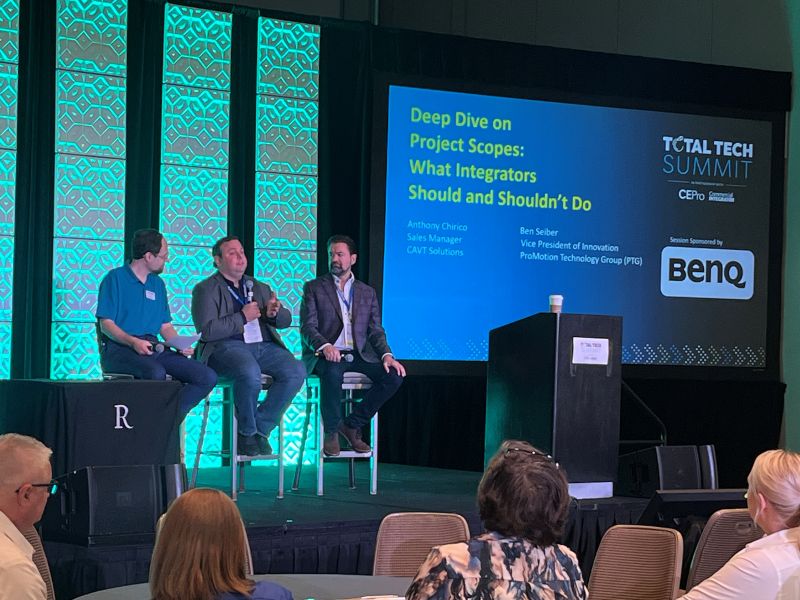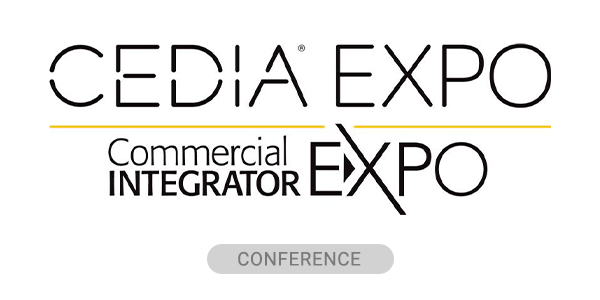At Total Tech Summit 2025, Ben Seiber, vice president of innovation at ProMotion Technology Group (PTG), and Anthony Chirico, sales director for CAVT Solutions, delved into the intricacies of project scopes. The conversation explored the balance between detail and brevity, the protective role of documentation, and the evolving role of technology in scope creation.
The Philosophy of Project Scopes: Detail as a Safety Net
Opening the discussion, moderator Dan Ferrisi highlighted the panelists’ preference for detailed project scopes, setting the stage for a deep dive into their philosophies. Chirico emphasized that comprehensive scopes justify work to clients and document changes, whether they require a change order or are no-charge adjustments. Seiber echoed this sentiment, asserting that “there is no such thing as too much detail” in a scope of work. For Seiber, a detailed scope acts as a safety net, guiding the project and protecting all parties involved.
Striking a Balance: Conciseness vs. Comprehensiveness
While advocating for detail, the panelists acknowledged the need for adaptability. Seiber noted that information must be tailored to different audiences — sales teams, engineers and installers — through compartmentalization and clear breakdowns. Chirico added that less detailed scopes can offer installation teams flexibility, allowing them to select alternative products as long as the core scope is met. This adaptability, however, requires careful communication to ensure alignment across teams.
The Language of Scopes: Consistency and Clarity
Terminology emerged as a critical theme in the discussion. Chirico explained that clients often focus on the narrative scope, which outlines system expectations and the customer experience. Seiber stressed the importance of consistent terminology within organizations to avoid confusion and ensure accurate referencing. He described the process of creating a sales narrative, which engineers then translate into a technical scope of work. “Everyone needs to speak the same language internally,” Seiber remarked, underscoring the value of clarity in communication.
Documentation as Protection: Guardrails for Success
The protective aspects of project scopes were a recurring topic. Seiber likened scopes to “guardrails,” defining commitments and limiting exposure for integrators. Detailed documentation, he argued, helps prevent overcommitment and ensures client expectations are met. Chirico highlighted the importance of outlining assumptions and responsibilities to avoid misunderstandings. Both panelists agreed that site surveys are essential for creating accurate scopes, particularly for complex projects.
The Role of Visuals and Client-Specific Requirements
When asked about including signal flow drawings in scopes, Chirico and Seiber offered differing perspectives. Chirico only includes such drawings if a design fee is paid, while Seiber advocates for their inclusion but not necessarily sharing them upfront. The panelists also discussed the varying requirements of public and private sector clients. Public clients, such as educational institutions, often demand line-item pricing and detailed documentation, while private clients may not read the entire scope.
Profitability and Transparency: Foundations of Success
Ferrisi steered the conversation toward project profitability, with both panelists emphasizing the role of meticulous documentation. Chirico noted that detailed scopes protect both integrators and clients, while Seiber highlighted the importance of clear communication to safeguard margins. Transparency emerged as a cornerstone of their business ethos, with Chirico advocating for sharing rules of engagement and project closeout information to build trust.
The Future of Scopes: AI and Human Oversight
The panel concluded with a forward-looking discussion on the role of AI in creating project scopes. While both Chirico and Seiber expressed cautious optimism, they stressed the need for human oversight. AI, they agreed, could handle rote aspects of documentation but lacks the nuance required for complex projects. Seiber envisioned a future where AI might evolve to tackle more sophisticated tasks, but for now, human expertise remains indispensable.
Audience Insights: Practical Tips and Best Practices
Audience questions added practical dimensions to the discussion. On the topic of client signatures, Seiber advocated for a single comprehensive scope focusing on deliverables, while Chirico highlighted the efficiency of tools like DocuSign. To ensure clients understand the scope, both panelists recommended detailed kickoff meetings and line-by-line walkthroughs.
The Art of Alignment
The panelists left the audience with a clear message: project scopes are not just documents but strategic tools that align teams, protect stakeholders and drive project success. Whether through detailed narratives, consistent terminology, or emerging technologies, the art and science of project scopes continues to evolve.





